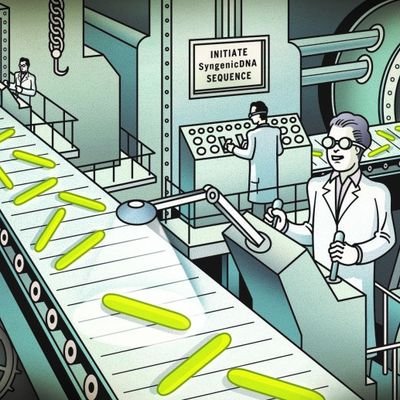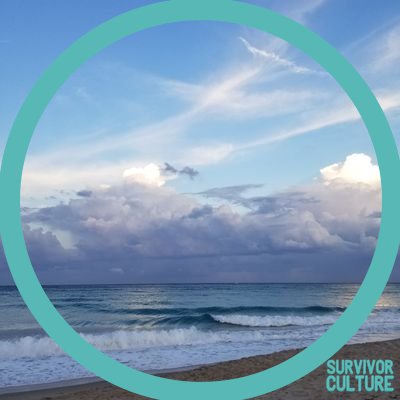
CJohnstonLab
@CJohnstonLab1
Followers
548
Following
388
Media
32
Statuses
185
Based at MD Anderson Cancer Center, we focus on the genetics/epigenetics of bacteria associated with human cancers, in particular those that infiltrate tumors.
Houston, TX
Joined January 2020
Don't wanna be here?
Send us removal request.
Explore trending content on Musk Viewer
McDonald
• 657054 Tweets
Flamengo
• 258349 Tweets
Corinthians
• 203793 Tweets
Charles
• 182740 Tweets
Franco
• 105817 Tweets
Ferrari
• 102277 Tweets
Watson
• 100035 Tweets
Norris
• 81798 Tweets
Colapinto
• 79632 Tweets
Staged
• 77821 Tweets
Browns
• 75222 Tweets
Lando
• 66160 Tweets
Verstappen
• 62091 Tweets
#GHDBT7
• 56344 Tweets
Mahomes
• 56030 Tweets
49ers
• 53882 Tweets
49ers
• 53882 Tweets
Kyle
• 42710 Tweets
Bruno Henrique
• 38493 Tweets
Gerson
• 36728 Tweets
Daronco
• 33063 Tweets
Purdy
• 27541 Tweets
Panthers
• 24279 Tweets
Jameis
• 18707 Tweets
Rams
• 15675 Tweets
Aiyuk
• 13763 Tweets
KARIME X YORDI
• 12723 Tweets
Niners
• 12168 Tweets
Ocon
• 11484 Tweets
Veiga
• 10874 Tweets
Last Seen Profiles
Pinned Tweet
New research from
@BullmanLab
/
@CJohnstonLab1
, with superstar 1st author
@mzepedar
, out now in
@Nature
pinpoints “high-risk” subtype of Fusobacterium nucleatum that dominates the colorectal
cancer (CRC) niche in human patient's
Link :
Tweet🧵below:
3
39
107
Finally, two papers out within a day of each other from the
@BullmanLab
and
@CJohnstonLab1
relating to the intratumoral microbiota, today in
@Nature
() and yesterday in
@CellReports
(). 🧵below to those interested!
9
136
365
Enjoyed working on this with
@BullmanLab
, and Laurence Zitvogel group
@GustaveRoussy
. Here in
@NatureCancer
we discuss the potential of Fecal Microbiota Transplantation to modulate microbiota for improved immunotherapy response in cancer patients.
0
15
49
Here, in
@NatRevGastroHep
, we and
@BullmanLab
@fredhutch
discuss current concepts relating to the intratumoral microbiota and what is needed to gain mechanistic insights on the role of bacteria in human tumors:
1
8
32
Wonderful and thought provoking morning seminar
@fredhutch
@HutchMRI
by Prof. John Cryan
@UCC
on the microbiota as a key regulator of physiology and behaviour. Thanks for joining us (remotely) in Seattle
@jfcryan
0
5
27
Bonus tweet! Elegant News and Views article by Ilana Livyatan &
@StraussmanR
discussing this work (Thank you!!).
0
5
26
Finally, after 5 yrs
@fredhutch
, the
@BullmanLab
and
@CJohnstonLab1
are moving to Houston! So fortunate and excited to continue this work at
@MDAndersonNews
with
@JenWargoMD
@nadim_ajami
and
@JimAllisonPhD
@PamSharmaMDPhD
, to translate this work, help patients, and
#endcancer
5
4
26
First, our
@Nature
manuscript, sterling work from first author Jorge Galeano Ninõ, and coauthors
@kaidenlac
,
@HanruiWu233
, Sam Minot
@fredhutch
and more. Here we show that the intratumoral microbiota impacts spatial, cellular, and transcriptional heterogeneity in human cancers.
1
4
23
Excited to share preprint of our recent collaboration with
@BullmanLab
,work led by
@kaidenlac
'The cancer chemotherapeutic 5-fluorouracil is a potent inhibitor of Fusobacterium nucleatum and its activity is modified by the intratumoral microbiota'
1
6
21
The Johnston lab at
@fredhutch
is seeking two outstanding Staff Scientists (one wetlab/one drylab) to advance our epigenetics/synthetic microbiology/metagenomic projects.
If you could RT to your network would greatly appreciate it! Links below
2
20
19
We then asked, what is happening in these microbial microniches? We coupled targeted RNAscope
@ACDbio
and
@nanostringtech
protein digital spatial profiling and see that these regions are highly immunosuppressive, with myeloid cell infiltration and T cell exclusion.
1
1
17
We adapted 10x Visium spatial transcriptomics
@10xGenomics
to determine the identity and in situ location of intratumoral microbial communities within patient oral squamous cell carcinoma (OSCC) and colorectal cancer (CRC) tissues.
1
1
13
We then adapted
@10xGenomics
5’ singlecell RNAseq for simultaneous detection of host and bacterial transcripts (which we call INVADEseq). This reveals the identity of intracellular bacteria, the host cells they infect, and their impact on host gene expression!
1
1
13
Our work with
@KLemonLab
led by
@Steph_BloomingT
on pangenomics/epigenomics of Dolosigranulum pigrum (candidate beneficial bacterium from the human microbiota) is now published in mSystems. Included my personal favorite image of a pangenome via PPanGGOLiN:
0
4
11
So grateful to all who worked for so long on this project, and not possible without funding from
@theNCI
,
@NIH_CommonFund
, &
@NIDCR
. First author funded through
@CancerResearch
. Also thanks to reviewers for critical feedback & editor
@BarbMarte
1
0
9
With high-resolution complete
@PacBio
genomes in hand, we could go deeper. To our surprise we saw something
interesting, Fna seemed to bifurcate into two distinct lineages or clades (Fna C1 and Fna C2). One
seemingly limited to the oral cavity and the other enriched in CRC.
1
1
8
This was a tremendous collaborative effort with
@cibiocm
@nsegata
and researchers including Sam Minot
@fredhutch
, Floyd Dewhirst
@ForsythResearch
. Also not possible without funders
@theNCI
@NIDCR
, TRA award from
@NIH_CommonFund
and W.M Keck foundation. Here's what we found:
1
0
8
Last summer my lab and
@BullmanLab
hosted (remotely) two outstanding
@tcddublin
@GeneticsTCD
undergrads Adam McGlinchey and Marija Stepanovica, mentored by
@martha_a_zepeda
. Incredible productivity by all with 2x manuscripts:
And
1
1
7
The
@BullmanLab
, cultured 65 unique Fusobacterium strains directly from 59 patients CRC tumors,
@ForsythResearch
/ KCOM grew 81 Fusobacterium strains from oral cavity of healthy ppl, and we used
@PacBio
SMRTseq to generate complete closed genomes and methylomes for every one!
1
2
7
A very detailed review by
@kaidenlac
at the
@BullmanLab
on GI cancers and the microbiota. Open access link for next 50 days 👇. Nice work!
0
2
7
Also, special thank you to
@BarbMarte
and
@Nature
team for the rigorous and fair review process. News and Views piece by
@DrCindySears
@JessicaRQueen1
@JohnsHopkins
here:
0
0
6
Our collaborative work with
@KLemonLab
led by
@Steph_BloomingT
'Genomic Stability and Genetic Defense systems in Dolosigranulum pigrim a Candidate Beneficial bacterium from the Human Microbiome' is submitted and available
@biorxiv_micrbio
. Some highlights:
2
7
6
@ChenMaggieSY
@sciam
@BullmanLab
@mzepedar
@laurenjyoung617
Thank you
@ChenMaggieSY
@sciam
for highlighting this work.👍 Great write up and link to the original Fusobacterium/CRC article (open access) here 👉
0
0
6
@stage4kelly
@natedandy_PhD
@fredhutch
@ImmunityCP
@BullmanLab
We made the article that this relates to open access. Hope this helps. ()
0
1
4
Nice description and application of our 2019 SyngenicDNA method in Bifidobacterium breve, (although we are not cited? Science-burn from my own home city Cork!
@VanSinderenLab
@Pharmabiotic
)
3
0
5
In the paper, we show that these clades are genetically, epigenetically, and phenotypically distinct. The
perfect comparative group to pull apart the genetics of tumor homing Fn capabilities! 192 factors enriched in Fna C2.
Pangenome network visualization plot shown
@axbazin
2
0
4
Oh no, I forgot to acknowledge the beautiful work by scientific illustrator
@markabelan
for this image. It was a pleasure talking science and perspective with him, and highly recommend working with
@ArtsciStudios
!
1
0
5
We identified factors that may influence this stability, including phage, the role of MGEs in strain-level variation & defenses against MGEs. My favourite is a conserved integrative hotspot across strains containing 13 different RM systems (plus 3
@SorekLab
deity systems)
1
0
4
This manuscript was a consistent and tremendous effort from our labs throughout the pandemic and very grateful to everyone who contributed along the way
@fredhutch
@mzepedar
@seajaneCchange
@AmpersandyKemp
@hanruiwu233
(and non twitter folks)
1
0
4
The genomic stability, antibiotic susceptibility, capacity for defense against HGT and lack of known virulence factors across D.pigrum genomes combined with inhibition of nasal pathobionts support it as a candidate for future therapeutic/prophylactic use.
@KLemonLab
1
0
3
Collectively, the intratumoral microbiota should be considered in patient CRC treatment!
@fredhutch
@AmpersandyKemp
Funded by
@theNCI
@NIH_CommonFund
@NIDCR
@nci
0
0
3
@ettwiller
@biorxiv
@illumina
Ah, I really meant 'commercially available at a core with back end pipeline ready to go'. Given the double whammy of m5c detection and hybrid/polishing with illumina reads, I'd certainly supplement all our WG Pacbio runs with this.
1
0
2
To support such efforts by the collective Fuso field, we (
@seajaneCchange
,
@mzepedar
) created an interactive website allowing the exploration of Fna pangenome datasets named Fusopangea.
1
0
2
Both spent the summer characterizing the genetics of bacterial isolates from human tumors. Helps when you have an in-lab
@PacBio
Sequel instrument for closed genomes/plasmids/methylomes and great collaborators pulling new species and strains from the intratumoral microbiota.
1
0
2
Very excited to share the news that the W.M. Keck Foundation has funded our super high-risk application that focuses on the potential of host-microbe epigenetic crosstalk. A collaboration two years in the making with
@BullmanLab
and
@Angela_Ting_PhD
.
1
0
2
Previously, in 2022, with
@BullmanLab
, we showed that intratumoral Fn could modulate the tumor microenvironment at the spatial and cellular level, supporting cancer progression in oral squamous cell carcinoma (OSCC) and colorectal cancer (CRC) ()
1
0
2
"In development of phages for bioengineering and therapeutics it will be important to consider that nucleic acids of introduced phages may spread into local phage populations through recombination, and the likelihood of transfer is not predictable based on killing host range"
Resolving the structure of phage-bacteria interactions in the context of natural diversity
#biorxiv_micrbio
0
18
53
0
0
2
@EpiDemos82
@Scalene
Interesting! Could you share direct link to protocol for ULread DNA isolation?
1
0
2
The Johnston Lab at
#Fredhutch
in Seattle is hiring! We're recruiting a Bioinformatics Analyst (level commensurate with experience) for Computational Analyses of Microbial Genomic/Metagenomic/Epigenomic Data.
#job
0
1
1
@CharisEngMDPhD
@Angela_Ting_PhD
@BullmanLab
Thank you Charis! Very excited to move forward with this one.
0
0
2
Is that gene essential?..kinda sorta..
@RosconiA
and
@tvanop
investigate how a bacterial pan-genome might influence gene essentiality, and whether essential genes that are initially critical for the survival of an organism can evolve to become non-essential.
A bacterial pan-genome makes gene essentiality strain-dependent and evolvable
#biorxiv_micrbio
0
7
26
0
0
1
@Steph_BloomingT
@PDSoros
This is wonderful news Steph, very proud of your achievement! What a great program.
0
0
1
Style in Synteny! 👍 Nice work Steph.
Our PPanGGOLiN figure describing the synteny of D. pigrum from our Flores Ramos et al. 2021 paper is the featured image for the latest issue of
@ASMicrobiology
! Thanks to
@KLemonLab
@CJohnstonLab1
& our many other collaborators for getting this story out
0
2
7
0
0
1
@pentamorfico
@NAR_Open
Awesome work, I just stumbled across 148 of these in a pangenome project yesterday and had no idea what to make of them. Then this pops up. Great timing.
0
0
1




























































